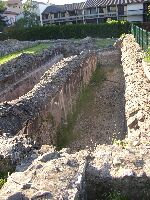
To store aqueduct water in order to absorb fluctuations in water supply and discharge.
Multiple chamber basin with conneting corridors with a drain (not visible) on the La Fourvičre hill in Lyon (France); the visible structure seems to be the lower part of a four chamber basin.
→ Storage basin versus Settling basin, see annex
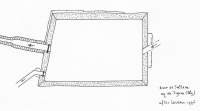
To clean / purify the water of debris and impurities.
Intake right, outlet left with a drain bottom left in Tigava (Algeria). Note the two controls on both gates left.
Drawing after Leveau 1976.
→ Storage basin versus Settling basin, see annex
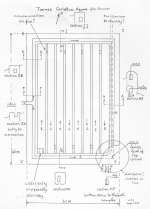
To distribute the incoming water flow over primary (first order) and secondary (second order) users. Nota that first order basins distribute the water directly to the users and second order ones distribute the water among first order basins.
This structure in Tiemes (Spain) incorporates several functions: it is a storage and settling basin (left) in combination with a distribution function (bottom right).
Drawing after Hernando 2001 supplemented after privat communication with the author.
For more examples, see separate entry
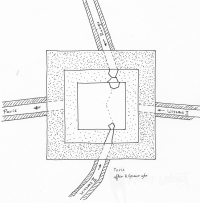
To collect the water flow from different tributaries to be put in one outgoing channel / pipe.
Basin at Wissous (France), start of the Roman aqueduct of Paris.
Drawing after Genier 1960.

To combine two or more water flows or the opposite, to divide one water flow into two or more streams.
The structure at Grotte Sconce (near Rome, Italy) is a combination of a storage and settling basin of the Anio Novus water (left) with branchlines to three other aqueducts of Rome.
Drawing: Ashby 1935.
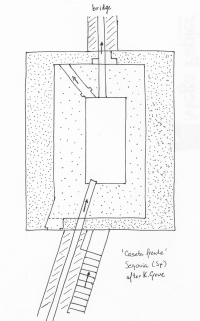
To divert the water flow temporarily for cleaning, inspection, maintenance or repair of the adjacent channel / pipe.
This structure is part of the Roman aqueduct of Segovia (Spain), just before the famous aqueduct bridge in the city. Note the grooves in the drain channel (top left) and possibly in the outlet channel to the bridge.
Drawing after Grewe 1985.
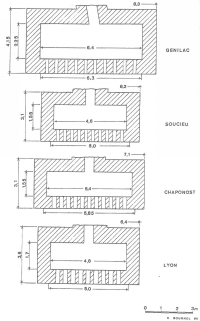
To facilitate the transition from an open channel to (a) terracotta, stone or lead pipe(s) or the opposite, often applied in siphons. The ones shown on the drawing are from the 'header tanks' of the four siphons of the Gier-aqueduct of Lyon (France).
Drawing: Burdy 1996.
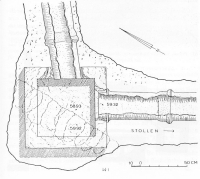
To facilitate a bend in stone and terracotta pipelines.
This basin (the only known one?) was part of the pre-Roman aqueduct Eupalinos at the island of Samos (Greece).
Drawing: Tölle 1990.
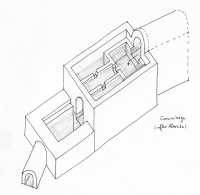
To calm unwanted turbulances of the water flow in order to prevent damage to the system.
A quite complex stilling basin near the end of the Roman aqueduct in Conimbriga (Portugal) equiped with grooves to control the process.
Drawing after Alarcao 1977.
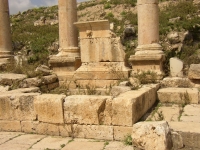
To facilitate drinking and scooping aqueduct water.
Basin with water-sprout along one of the main streets in Roman Gerasa (Jordan).